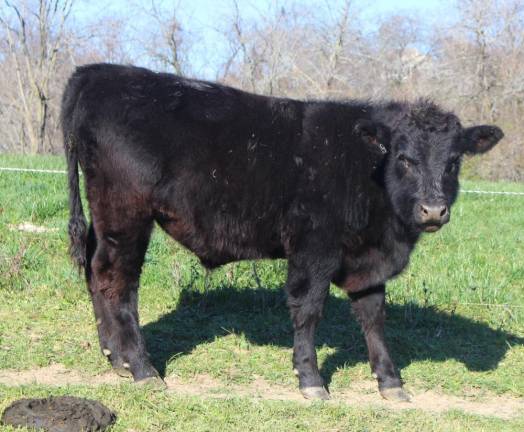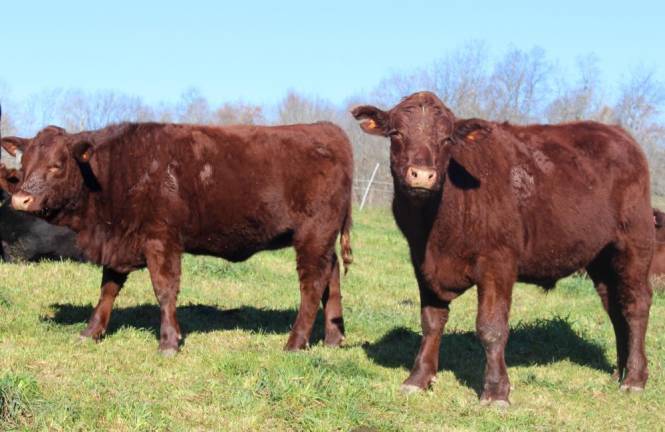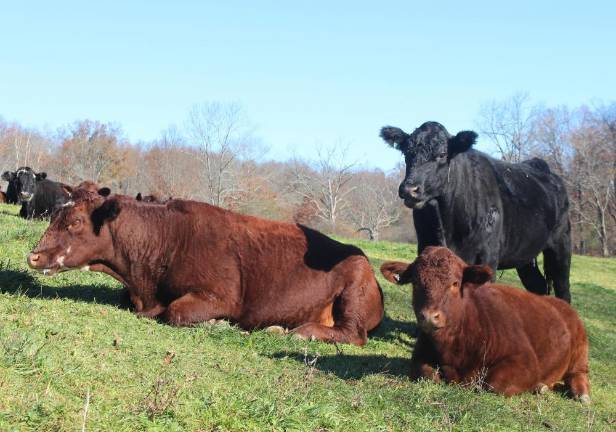The biggest burpers
Taxing farmers? Cow probiotics? Grappling with the conundrum of methane-belching livestock.



Sorry if this spoils your day but here’s yet another thing to worry about: burping cows. No crap. Cow burps and, to a lesser extent, cow farts produce copious amounts of methane. Bovines are far from the only culprits. Other ruminant livestock like sheep and goats contribute their share, as do deer and antelope. But cows, because they are so big, because there are so many of them (at least one billion), and because they eat so much, are the biggest burpers.
A colorless, odorless, flammable gas, methane is the king of greenhouses gases in terms of potency. True, there is much less methane in the air than CO2 and it doesn’t stay around for a thousand years, but it’s becoming clear that we underrate its presence at our peril. And methane levels keep increasing, mostly due to human activity like raising livestock, fossil fuel extraction and use (especially fracking) and organic waste disposal in landfills. In the energy sector, technologies already exist to reduce methane emissions, though Big Oil has been slow to embrace them because they add to production costs. When it comes to dealing with methane-belching livestock, we have only recently begun to acknowledge and attempt to address the problem.
In New Zealand, a small country with twice as many cows (10 million) as people, and even more sheep (26 million), methane produced in the digestive systems of these ruminants is seen as a matter of real concern. Regardless of which end of the animal it comes out, methane accounts for approximately half the country’s greenhouse gas emissions. As part of its pledge to be carbon neutral by 2050, New Zealand’s government is proposing a world-first: to tax cattle and sheep for doing what comes naturally. Revenue from the levy would be recycled back to farmers through efficiency incentives, and funding research of new ways to lower agricultural methane output. Unsurprisingly, New Zealand farmers are less than happy about the proposal. Fearing the new tax will drive up production costs and leave them less competitive on the global market, they took their tractors into the streets in October, affixed with signs like: “This Govt Hates Farmers” and “What Society Restricts Food Production?”
Here in the USA, we have plenty of cows ourselves: close to 100 million. Presumably, all of them are belching and farting away 24 hours a day, just like their Kiwi cousins.
Tackling the problem with tech
Exhibit A of emerging methane-reducing technology is a probiotic called Kowbucha, which is in testing by a giant dairy cooperative in New Zealand called Fonterra. When added to a milk-like drink fed to calves, they claim Kowbucha can reduce the methane content of the animals’ burps by 20 percent: a step in the right direction.
A collaboration of Dutch agribusiness companies recently began offering their own methane reducing feed additive, Bovaer, which they say can reduce methane in dairy cow burps by 30% and in beef cattle by as much as 45%. That’s more encouraging, but Bovaer must be fed to the animals daily, whereas Kowbucha is given just once to calves.
Closer to home, a seaweed-based additive called Brominata is in development by Blue Ocean Barns, headquartered in Hawaii. Derived from red seaweed grown in tanks, Brominata has been tested on cows in California. Preliminary results suggest methane reductions of at least 50%. Vermont-based Ben & Jerry’s is gearing up to conduct its own trial with Brominata on a Vermont dairy farm in early 2023. Brominata, said Ben & Jerry’s representative Tom Gates, “is just one of several different additives and interventions his company is looking at” in its quest to reduce both carbon and methane emissions.
Easier said than done, however. Third-generation farmer Tom Bellavance, who keeps 1,000 cows on his 1,700-acre Sunset Lake Farm in Vermont’s Lake Champlain Basin, had expected to be in Ben & Jerry’s pilot study on Brominata, he said when reached by phone. But he got dropped. He suspects it was because they didn’t have enough Brominata to work with all the farms that applied to participate in the trials.
I asked a couple of local cattle farmers how they feel about their animals’ methane output.
Kezialain Farm in the Town of Minisink is one of the oldest farms in Orange County. It’s been in the Lain family since 1775. Over most of those nearly 250 years, generations of Lains supported themselves and fed multitudes of others by raising and milking dairy cows. When the dairy business in Orange County took a dive in the late 20th century (from which it has not recovered), the Lains, not wanting to see a crop of houses on their beloved land, shifted their agricultural strategy. Today, M.A. Lain and his son, Milton, raise 100% grass-fed, certified organic beef cattle on the farm’s gently rolling hills. The Lains clearly care for their animals. They practice rotational grazing, moving the cows to different pasture almost every day. “It’s better for the land than the constant cropping we were doing in the old days,” said Lain. Judging from their contented and unhurried looks, the animals agree. M.A. doesn’t dispute the dangers caused by methane buildup in the atmosphere but feels his animals constitute just a tiny part of that problem and more than make up for it with their positive attributes. “They keep the land healthy and productive and provide essential food for humans,” he said. Lain is open to the possibility of using a methane reducing feed additive in the future, but only if its efficacy is clearly established and there are no adverse effects.
Will Brown of Lowland Farm in the Town of Warwick grazes 250 cattle on his 1,000 acres of grassland. Like Lain, he sees the issue of methane output from livestock operations and other sources as multi-faceted, a lot more gray than black-and-white. After all, well-managed pastureland has one great, redeeming attribute — it holds carbon in the soil and this carbon supports the gazillions of microbes and other organisms that keep soil healthy and fertile.
Brown is not opposed to using a methane reducing feed additive, he says, if it’s proven effective. “But right now,” he adds, “there’s no easy way to administer a measured daily dose to free range animals who make their own choices about when, where and what to eat.”
Brown assumes human ingenuity will solve this problem. But, he cautions, “it may take time.”
Everything in moderation
If we care about the planet we live on remaining broadly habitable for 8 to 10 billion of us, it’s getting harder to be a heavy meat eater, or, for that matter, serious consumer of other animal products like milk and cheese. Raising livestock uses an enormous amount of land — some for free-range cattle but much more to grow grains for the overwhelming majority of animals that are packed into feedlots. In the U.S. at least 80% of our farmland grows commodity crops like corn and soybeans which are fed to domestic livestock. These grains are not part of a grazing animal’s natural diet.
If we cut back on — and I don’t mean cut out — our consumption of meat and cheese and ate more fruit and veggies we would take pressure off our finite land resource and send less methane into the sky. We might be healthier, too.
I’ve been a meat eater all my life. That probably won’t change, though I am trying to cut back – to, say, no more than 2 or 3 ounces of meat per day. And I’ll go for locally pasture-raised whenever I can.
After writing this story, more than ever I’d like to have beef cows at our organic vegetable farm, where we have unused pasture that’s getting overgrown and some idle cropland too. I’m always on the lookout for someone to bring grazing animals here. Notwithstanding the inevitable burping, raising livestock on grassland is an age-old, ecologically sound way to convert the sun’s energy into food for us. It’s good for the land, too.